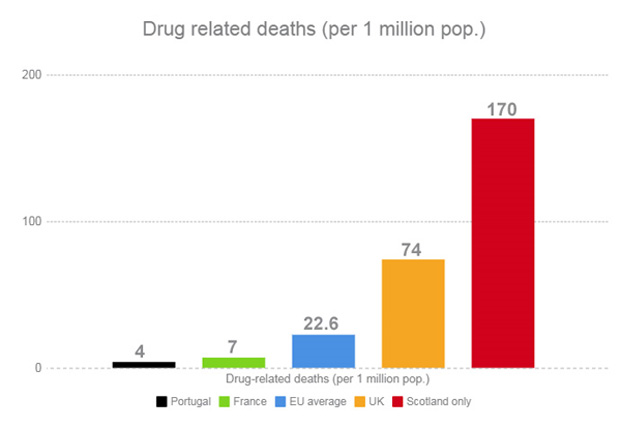A newly-published report has highlighted the huge human and financial cost of drug prohibition in the UK.
On 6 June, the European Monitoring Centre for Drugs and Drug Addiction (EMCDDA) published a report – the European Drug Report 2019 – highlighting trends and developments in drug policies and use around the continent. Findings from the UK country report reveal that, despite enormous expenditure and mass criminalisation of people for drug offences, drug-related deaths continue to soar and rates of drug use remain stable.
The EMCDDA found the UK’s drug-related public expenditure to be far more focused on “supply reduction” – including the policing of people for drug possession – than on “demand reduction”, such as treatment and education. The data, from 2010, showed that drug-related public expenditure made up 0.5 per cent of the country’s national gross domestic product (GDP); 65 per cent of which was allocated to supply reduction.
The report stresses the importance of “understanding the costs of drug-related actions […] for both policy development and policy evaluation”. Across Europe, the information available at both a local and national level “remains sparse and heterogeneous”.
Supply reduction policies are driving mass criminalisation and incarceration in the UK. As of March 2019, there are 82,847 people in prison in England and Wales, of which 11,015 were sentenced for drug offences. A further 1,738 people are remanded in custody for drug offences. The EMCDDA’s report shows that – in 2015/16 – there were approximately 107,000 court convictions or police cautions for drug offences in the UK, of which 55 per cent were cannabis-related. A further 23 per cent were for powder cocaine, and 12 per cent were heroin-related.
The drug-induced mortality rate among adults in the UK reached 74 per million in 2016, more than three times the EU average of 22.6 per million. Figures vary among the UK’s constituent countries; in Scotland, the drug-related death rate is 170 per million, considerably higher than the rate of 66 per million in England and Wales.
Almost 90 per cent of drug-related deaths in the UK involved some form of opioid, such as heroin. The country is failing to provide adequate harm reduction services for people who use opioids, the report indicates. Prescribed injectable methadone and diamorphine are “rarely provided” to patients in England, despite being legally available. Moreover, the provision of take-home naloxone – a life-saving, overdose-reversing medication – is insufficiently accessible in England, a report from Release shows.
The EMCDDA’s report shows that there were 115 new HIV diagnoses associated with injecting drug use in the UK in 2017 – of which 32 were registered in Scotland. England does not report full national data on needle-syringe programmes (NSPs) – a service which allows people to exchange used needles for new injecting equipment – so the extent of access to this service is unclear.
Further information on drug-related deaths in England and Wales is set to be published by the Office for National Statistics in August 2019.
This article was originally published with an image containing drugs paraphernalia. We have sinced removed and replaced this image, which may have been triggering to some of our readers.


